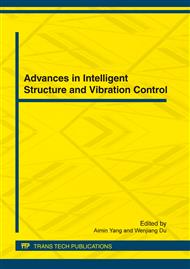p.175
p.180
p.185
p.190
p.195
p.200
p.206
p.211
p.216
The Lifetime Model of the One-Unit-System with Two Kinds of Wear-Out
Abstract:
A system at inception is endowed with a random amount of resource, the process of the lapse of system life can be viewed as that of the depletion of random resource caused by the wear-out effect. This thesis considers the wear-out process of the system as the sum of an additive compound nonhomogeneous poisson shock wear-out and a continuous routine wear-out in time t. With the introduction of the concept of random resource, a wear-out model is built. Moreover, the aging properties of the system lifetime are studied in this model.
Info:
Periodical:
Pages:
195-199
Citation:
Online since:
March 2012
Authors:
Keywords:
Price:
Сopyright:
© 2012 Trans Tech Publications Ltd. All Rights Reserved
Share:
Citation:


